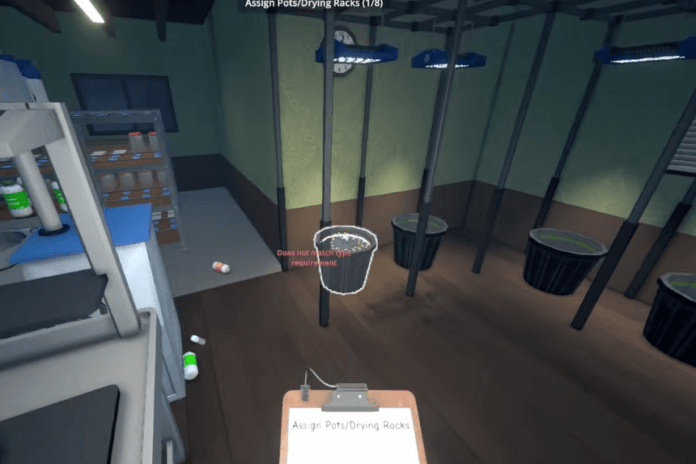The provided text details a strategy for fully automating a “Sweatshop” in “Schedule 1,” a game or simulation. This guide is designed for beginners and outlines the necessary steps to establish an efficient production line with a single employee (a botanist). It covers everything from initial setup and required equipment to layout recommendations, automation procedures, production management, mixing for increased value, and tips for optimizing efficiency, with suggestions for future upgrades to scale the operation into a more profitable venture.
How to Fully Automate Sweatshop
This setup is ideal for beginners to get their Sweatshop up and running efficiently in Schedule 1. With only one employee and some strategic placement, players can create a fully automated production line and start generating solid income. As experience and capital grow, the operation can be scaled into a high-end, high-profit empire.
Starting Out
To begin automating the Sweatshop, players should:
- Talk to Manny to hire a botanist.
- Assign the botanist to the Sweatshop location.
- Understand that initial costs may be high, but the botanist only costs $200 per day once set up.
Required Equipment
Players must collect the following:
- 8 Grow Tents from the hardware store
- Mixing Station
- Packaging Station
- One Bed (for the botanist)
- Drying Racks (2 large ones recommended)
- Storage (combination of small, medium, and large storage preferred)
- Speed Grow or PGR Additive
- Granddaddy Purple Seeds
Note: Players must visit the hardware store after 6 PM, as it’s closed earlier.
Layout Recommendation
Inside the Sweatshop:
- Place 3 grow tents on one side, 4 on the other, and 1 at the back – for a total of 8 tents.
- Position the bed near the wall for space efficiency.
- Set up two large drying racks for harvested product.
- Add a mixer, packaging station, and the necessary storage units.
Optimizing the Setup
- Use Long Lasting Life Soil: Produces 30 buds per cycle.
- Pair it with Speed Grow (50% faster growth but reduced quality) or PGR (more yield but low quality).
- New players should focus on quantity over quality early on.
- Once more money is earned, upgrade to halogen lights and suspended racks for better quality output.
Assigning the Botanist
To automate the process:
- Assign the Bed: Walk to the botanist, press 9, and assign their bed.
- Set Supply Rack: Select the rack that holds seeds, soil, and fertilizer.
- Select Pots: Assign each of the 8 grow tents to the botanist.
- Set Destination Racks: Assign 4 tents to one drying rack, and the other 4 to the second rack to balance storage usage.
Managing Production
- Use Shift+Click to select multiple pots and manage them all at once.
- Choose:
- Seed: Granddaddy Purple
- Additive: Speed Grow or PGR
- Destination: Assigned drying rack
- Seed: Granddaddy Purple
Mixing for Value
- Pick up Viagra or Chili Powder (for mixing) from the nearby gas station.
- Mix Granddaddy Purple + Viagra to create Ice Cream Gold.
- This increases the weed’s value from $44 to $60, while costing only $4 extra per unit.
- This increases the weed’s value from $44 to $60, while costing only $4 extra per unit.
- Use the Schedule One Calculator site to test optimal combinations for mixing.
Running the Operation
- Put cash in the botanist’s briefcase to initiate work.
- The botanist will begin planting, maintaining, and harvesting automatically.
- The player can handle mixing and packaging while the botanist cycles the grow tents.
- Use jars and baggies for packaging.
- Sell product via Albert Hoover’s dead drop system.
Tips for Efficiency
- Speed Grow accelerates output but lowers quality.
- PGR may yield better quantity per trim at the cost of even lower quality.
- Focus on volume and automation at first, then scale quality with upgrades.
- Monitor drying racks and storage regularly to prevent overflow.
Future Upgrades
Once more funds are secured:
- Replace grow tents with suspended racking and halogen lights.
- Swap Speed Grow for fertilizer to maximize product quality.
- Experiment with higher-tier mixes and strains for better profit margins.

